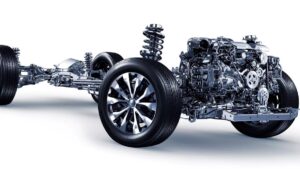
If you’ve ever wondered what a boxer engine is, watch this video from Engineering Explained. They use a miniature 3D-printed Subaru engine, and a WRX car from the 2018 model year, to show how these engines work. Each piston gets its own crank pin, which moves like a Boxer’s gloves. Moreover, a boxer engine is smaller and lighter than its counterparts.
Horizontally opposed pistons
If you’ve been a long-time motoring enthusiast, you probably know that a boxer engine has horizontally opposed pistons. These pistons share energy with the opposite piston and there are gaps between them for air and exhaust gas to flow through. This arrangement is also more efficient than conventional engines. As a result, opposed-piston engines have become increasingly popular. A consortium of 280 companies, called Calstart, is trying to make these engines more efficient and reliable.
The main advantage of a boxer engine is its low vibration levels, which improves both the durability and the efficiency of the engine. Horizontally opposed pistons also enable a shorter crankshaft. Shorter crankshafts reduce the weight and shaft loads on the motor. A horizontally opposed piston is also less complicated to manufacture. The result of all these advantages is a boxer engine that’s smoother to drive and produces better performance than its counterpart.
Lower center of gravity
In-line engines have a higher center of gravity than boxer engines. A boxer engine’s lower center of gravity allows the engine to be positioned below the passenger compartment, reducing the center of mass. This helps to improve fuel efficiency and performance. The engine’s flat layout means less vibration, reducing the center of mass and increasing balance. It also allows power to be delivered directly to the transmission, reducing the need for additional components that cancel out vibration.
Subaru has developed the Boxer engine to be lower and mount it closer to the center of the vehicle. The result is a gravitational center height that rivals that of super sports cars. This engine’s symmetrical balancing helps it achieve better front and rear weight distribution and offers a more fun and safer driving experience. But it’s not just the engine that has low center of gravity.
Less vibration
There are many advantages of using a boxer engine for your car. One of these is that it has a more balanced engine system than any other type. Because of this, vibrations are reduced and the overall car performance is smoother. Another benefit is that you will experience less vibration while driving, since you will be driving a car with a boxer engine. The key is to balance the weight of the car properly.
When looking at the different engines that are available, you can compare them based on how much vibration they produce. The differences between them come down to how the cylinders are arranged in the engine. In general, smaller angles tend to generate more vibration, while larger angles tend to produce less vibration. Also, since the Boxer engine is positioned horizontally, it does not require vibration-absorbing components. Furthermore, a boxer engine gives you a more responsive and agile handling than a flat or inline engine.
Smaller size
A smaller size and a more compact design are some of the advantages of a Boxer engine. The small size and all-aluminum construction of the Boxer engine make it much lighter than its counterparts. The lighter weight means a vehicle that accelerates more quickly and rides smoother. Plus, a lighter vehicle means better fuel efficiency. It can be difficult to find a vehicle with the right combination of power and fuel efficiency.
While boxer engines are considered a niche technology, their performance isn’t as poor as some people might think. Eventually, boxer engines will be phased out, but for now, manufacturers are sticking with the design. Ultimately, boxers are more efficient than any other type of engine, but they’re still relatively heavy and difficult to produce. For now, the only cars that use them are Porsche and Subaru.
Higher power output
The BOXER engine design has many benefits. But it does have some drawbacks as well. Its high-revving nature and compact combustion chamber mean that its power output is limited by the time it has to burn fuel. The cylinders are heavy, and if the engine were to be made lighter, the overall engine would become wider. And a wider engine would mean a larger chassis – unattractive from a packaging and road conditions standpoint.
The Subaru boxer engine is a masterpiece of symmetry. When paired with Symmetrical All-Wheel Drive, the engine produces a surprising amount of power. The engine is positioned along the center line of the car, creating a smoother ride. While the 2.5L model has been known to experience head gasket problems over the years, the 2.0L Subaru boxer engine has proven to be the most reliable.
More parts
If you’re a car enthusiast, then you know that a boxer engine requires more parts than an inline-4. A boxer engine has two cylinder heads, a valve-train, and two cooling jackets. Because of this, these engines can be expensive to produce and have more moving parts than inline-4 engines. As a result, many manufacturers limit the size of their boxer engines to mid-engine designs. The small boxers are usually exempt from this rule.
Another benefit of a boxer engine is its balance. A V-shaped engine tends to be unbalanced, and the cylinders are vertically oriented. The Boxer engine’s horizontal placement causes the pistons to be balanced and oppose each other. This balance keeps the car’s wheels stable and prevents the car from rolling when turning or cornering. If you want to learn more about a Boxer engine, here are some benefits:









RECENT COMMENTS